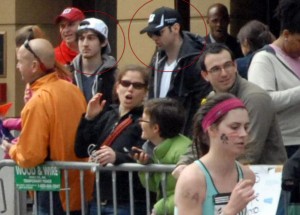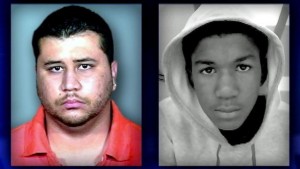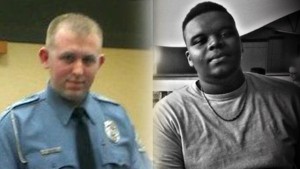A smart man once said “A picture is worth a thousand words”. Well, the video footage that records 30 frames per second, has a lot to say. The CCTV trend started in 1986 in the United Kingdom with 3 cameras in 1 square mile area in a town called King’s Lynn. Today, England has more CCTV cameras than any country in the world, with half a million making up its network, nicknamed the “Ring of Steel”. In all those years of development, the “Ring of Steel” cost more than $330 million. Many U.S. cities, including New York, Philadelphia and Chicago, followed and began installing the police surveillance cameras in the early 1990s. Those CCTV systems jumped by almost 700 percent from 1980-2000. With the multiple gadgets that we carry every day in our possession, the recording of video footage became more accessible to each one of us. If you also take into consideration the multiple CCTV systems that are installed everywhere we go, there is a very good chance that someone’s camera will record the incident that you are involved in. Knowing this, most say that having this amount of cameras is also a great crime prevention utility.
Law enforcement use of CCTV as a tool to fight crime and terrorism has become more prevalent over time. Do you ever get the feeling you’re being watched? Walking down the street, do you sense that someone somewhere is keeping an eye on you? These days, chances are, you’re right. A growing number of cities across the United States and abroad have installed networks of closed-circuit television CCTV cameras. Police monitor the video in an effort to prevent crime and catch lawbreakers in the act. In the United States, privacy issues related to the use of CCTV surveillance are first and foremost in regard to the 4th amendment of the United States Constitution, which protects a citizen from unreasonable searches and seizures by law enforcement and other government agencies. The emphasis is on the protection of people, not places. As a result, at least in terms of clearly public places, citizens cannot have an expectation of privacy. Surveillance of individuals in public places would therefore appear to be constitutionally acceptable. This interpretation stretches only so far.
One of the best examples is the Boston Marathon bombing that happened on April 15, 2013. 3 days after, the suspects were identified by the FBI using video surveillance footage. The CCTV system played a major role in identifying the responsible for the terror act.

One of the most useful applications for video recording evidence is to establish the identity of the perpetrator(s) of an offence. This is especially important given the frailties that are associated with eyewitness identification evidence.
Mobile video surveillance also became very popular and used daily by the law enforcement agencies. Today, many police departments in the United States and worldwide are applying this technology to patrol operations by equipping their vehicles with mobile video recording equipment. Although the early attempts to place cameras in patrol vehicles were full with technical and safety problems, miniaturization and advances in technology have made the use of the mobile video recorder practical and affordable. As technology in the field of audio/visual recordings evolves, equipping police vehicles with in-car cameras will be the norm and no longer the exception. Now, some police departments are using miniaturized video cameras and their microphones to capture, in full detail, officers’ interactions with civilians. High-capacity battery packs can last for an extended shift. And, all of the videos are uploaded automatically to a central server that serves as a kind of digital evidence locker. Undoubtedly CCTV evidence is convincing, though CCTV’s ability to reduce overall crime levels through detection (rather than prevention) is less convincing and arguably a less effective way of impacting crime. For this mechanism to be effective, the implementer must believe arrests are the best way to solve a crime problem.
Not only agencies are using the advantage of the CCTV systems. Since the whole trend started, the prices of these systems decreased dramatically and became very affordable for private citizens. It seems like the best defense in court today, is the video footage that will prove beyond the reasonable doubt your righteousness in a court of law. The law abiding citizen knows that video footage is the best way to protect his/herself in a shooting situation afterwards in court. There are approximately 300 million guns in US which are part of our life and used daily by good guys and bad guys as well. Unfortunately, the forensic science cannot provide the whole picture in the investigation of a crime scene, and you can find yourself in trouble with the law very quickly. Any attorney will tell you that there is a very thin line between self-defense and man-slaughter and there is no better way to prove that you had the right to use your firearm to defending yourself, than with video footage.
In 2014, we witnessed 2 very controversial incidents that made a lot of waves in arguing the right for self-defense. Both the shootings of Trayvon Martin and Michael Brown did not have any video surveillance evidence, which made those very hard to prove and cost the tax payer a substantial amount of money. Can you imagine of how things could have turned out differently if they had the video footage of the incidents!??!?!


Implementers should be aware that technology is always on the march, and a number of particular innovations are imminent. Two systems are undergoing rapid development. Backscatter low-level x-ray imaging is a technology that provides the potential to see through clothing and detect weapons and other prohibited materials. Facial recognition systems require a link to another computer system within a police department, such as a database containing photographs of wanted individuals. Beyond their use to identify specific fugitives, the next generation of CCTV camera images may also be analyzed by problem recognition systems. Unlike basic motion detection systems (which activate a camera when a sensor is tripped), problem recognition systems are software programs that interpret video images from a CCTV camera. The program attempts to identify problems such as potential robberies or street brawls by seeking out unusual characteristics or patterns in digital images. They can also be programmed to identify out-of-place articles, such as abandoned packages or weapons. Some cities are also considering the introduction of cameras with systems that can identify the source of firearm activity and automatically train their cameras on the source of that activity. All of these next-generation systems will carry with them particular issues in terms of police response, the public’s perception of safety, and, may also influence the public’s perception of the government’s intrusion into private life.
